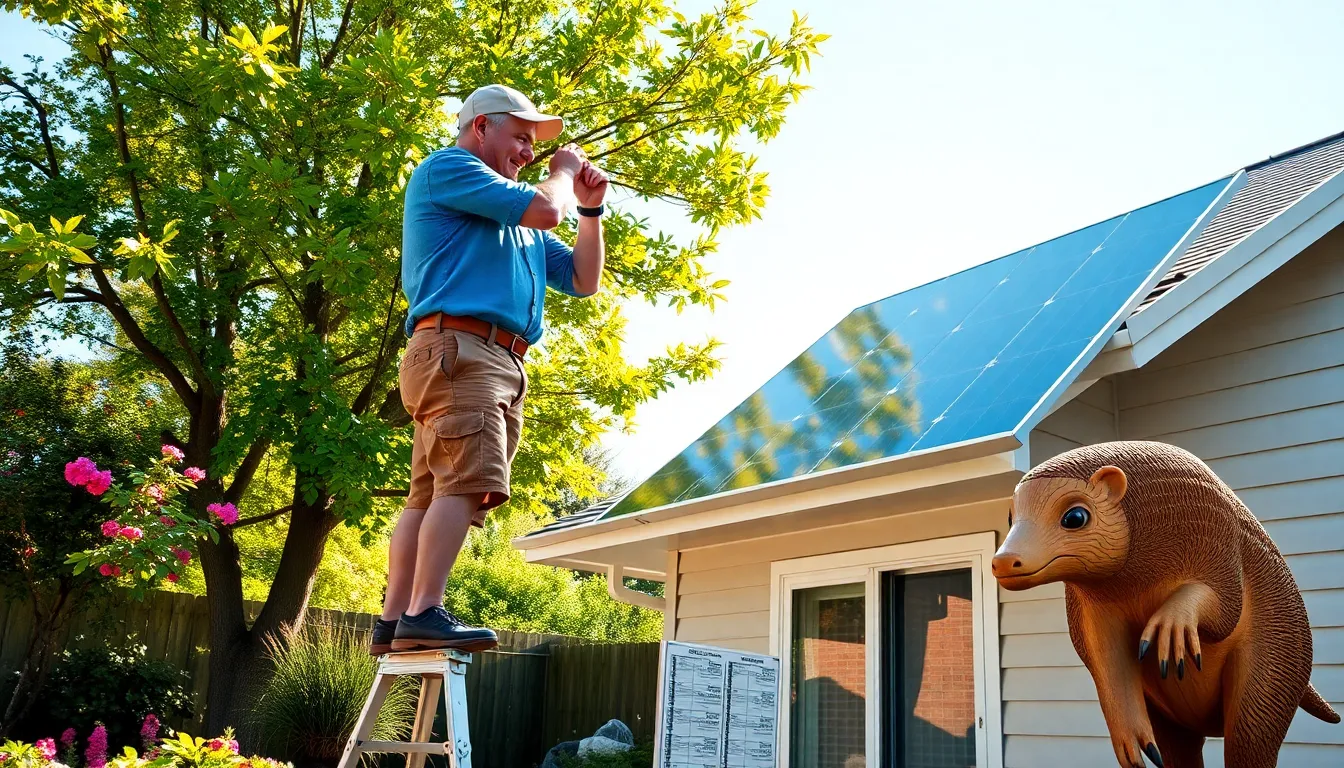As the world shifts toward renewable energy, the concept of DIY solar solutions has gained significant traction. HomeRocket Realty stands at the forefront, empowering homeowners to embrace sustainability through innovative projects. In this text, readers will discover the fundamentals of DIY solar systems, their benefits, how to find inspiration in nature’s designs, and practical guidance on setting up a personal solar panel system. Immerse to explore how taking control of your energy needs not only enhances your home but also contributes to a healthier planet.
Table of Contents
ToggleUnderstanding the Concept of DIY Solar Solutions
DIY solar solutions refer to installing solar panels and systems by homeowners without relying solely on professional installers. This innovative approach allows individuals to take charge of their energy needs, reduce reliance on fossil fuels, and potentially lower electricity costs.
In recent years, the accessibility of solar technology has improved, making DIY installations more feasible. Products available on the market are designed for the average consumer, enabling them to install solar panels with minimal technical knowledge. As a result, many homeowners are opting for tailored solar solutions that align with their energy consumption and financial goals.
Benefits of Implementing DIY Solar Systems
By choosing DIY solar systems, homeowners can reap numerous benefits:
- Cost Savings: One of the most immediate advantages is the reduction in installation costs. By doing it themselves, homeowners eliminate labor fees and can potentially save thousands of dollars.
- Customization: DIY projects allow individuals to tailor their solar solutions to fit their unique energy needs and preferences. Whether it’s the size of the system or specific components, customization ensures maximum efficiency.
- Sustainability: Embracing solar energy contributes to reducing carbon footprints. Homeowners can enjoy the satisfaction of harnessing clean energy while protecting the environment.
- Increased Property Value: Homes with solar systems typically see an increase in property value. This investment often pays off not just in energy savings but also in an enhanced home value during resale.
- Educational Experience: Engaging in a DIY solar project can be an informative journey. Homeowners gain insight into renewable energy, electrical systems, and sustainable practices, enriching their knowledge base.
Pangolin: Nature’s Inspiration for Sustainable Living
The pangolin, often referred to as the world’s most trafficked mammal, provides unique insights into sustainable living. Its natural design and behavior encapsulate principles that can inspire eco-friendly practices.
Pangolins are creatures that thrive in diverse environments, showcasing adaptability, essential in today’s environmental landscape. This animal’s scales represent a natural form of protection, paralleling how homeowners can protect their living spaces with solar panels. By looking to nature, individuals can adopt strategies that enhance energy efficiency and sustainability in their own homes.
Also, the pangolin’s diet primarily consists of ants and termites, underscoring a minimalistic lifestyle that relies on local resources. This philosophy can be applied to DIY solar projects by focusing on using locally available materials and renewable resources, which not only reduces environmental impact but also fosters community engagement.
How to Create Your Own Solar Panel System
Creating a solar panel system requires careful planning and consideration. Here’s a concise guide to help you get started:
Choosing the Right Components for Your Solar Project
- Solar Panels: Select panels based on efficiency and warranty. Monocrystalline panels tend to be more efficient but can be more expensive than polycrystalline.
- Inverter: This component converts DC electricity generated by solar panels into AC electricity for home use. Choose a reliable inverter that matches the output of your solar panels.
- Batteries: If off-grid functionality is desired, include batteries for energy storage. Lithium-ion batteries are popular for their long lifespan and efficiency.
- Mounting System: Depending on your roof type and angle, ensure you have the correct mounting equipment to securely fasten the panels.
- Charge Controller: For systems with batteries, a charge controller manages the power going into and out of the batteries, preventing overcharging and prolonging battery life.
Step-by-Step Guide to DIY Solar Installation
Installing a solar panel system involves several steps:
- Assess Your Energy Needs: Determine how much energy you consume monthly. This will help you to size your system appropriately.
- Plan Your Layout: Identify the ideal location for your solar panels. South-facing roofs often yield the best results, but consider shading from trees or buildings.
- Gather Your Materials: Purchase your chosen components, ensuring they are compatible and from reputable suppliers.
- Install the Mounting System: Secure the mounting system based on your planned layout. It’s crucial to ensure stability and durability.
- Connect the Solar Panels: Follow the manufacturer’s guidelines for wiring the panels together and connecting them to the inverter.
- Set Up the Inverter and Batteries: Connect the inverter to the solar array and batteries, ensuring proper electrical connections.
- Testing: After installation, perform tests to ensure everything functions correctly. Monitor the performance of your system to check for efficiency.
Maintenance and Troubleshooting Your DIY Solar System
To ensure optimal performance, regular maintenance is crucial. Here are some key maintenance tips:
- Keep Panels Clean: Dust and debris can hinder panel performance. Clean them regularly, especially after storms.
- Check Connections: Periodically inspect all electrical connections for corrosion or wear. Tighten any loose connections to prevent failure.
- Monitor Performance: Use monitoring tools to keep an eye on how your system operates. Look for significant drops in output, which could indicate issues.
- Battery Maintenance: If your system includes batteries, follow the manufacturer’s guidelines for care. Regular checks will extend battery life and efficiency.
- Prepare for Inspection: Once a year, it can be wise to have the system inspected by a professional to ensure it meets safety standards and operates efficiently.
Conclusion
Implementing a DIY solar system empowers homeowners to take control of their energy future. Through careful planning, the understanding of natural inspirations like the pangolin, and diligent maintenance, individuals can enjoy the numerous benefits of solar energy. As sustainability becomes increasingly important, embracing DIY solar solutions is not just about reducing costs but also about contributing to a more sustainable and eco-friendly world.






